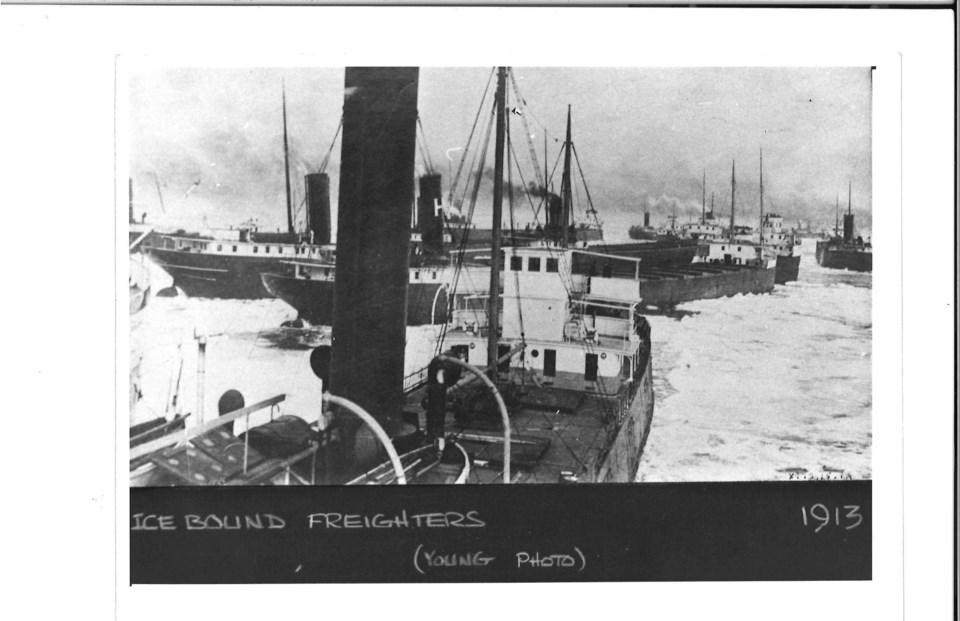From the archives of the Sault Ste. Marie Public Library:
What began as a calm November day on Lake Superior in 1913 had rapidly changed into something that many sailors had never experienced before - a fight to survive the wild waters of Lake Superior!
Many ships fought the waves, wind and blinding snow and emerged battered but still able to navigate back to a safe port after the storm. For other ships, however, sailing on the unforgiving Lake Superior during this wild storm, the outcome was a different story.
The steamer, the L.C. Waldo was spotted by the crew of the George Stephenson early on Sunday morning, Nov. 9. Thirty-foot waves had smashed the rest of the ship to pieces and all that could be seen was the bow and fore-cabin that remained above the waterline. They were covered in ice and were barely recognizable.
At 7 a.m. the Stephenson crew saw a distress flag being raised from the wreck. Unbelievably all 29 crew members, including two female cooks were rescued from the wreck.
Just a short distance away, another steamer, the Turret Chief, was also pushed towards the shoreline and broke into two pieces.
Since this steamer was only 257 feet long, it may have given them a little more ability to move as they get closer to shore. The crew were able to throw lines toward the shoreline and all were to get safely to shore. By building a fire and a shelter they were able to keep themselves protected throughout the storm until they could be rescued.
The William Nottingham was out of fuel and fighting for its life near Keweenaw Point.
It ran up on the Parisienne Shoal and continued to be battered by the wild waves. The lifeboats were completely destroyed. Three crewmen set off in a yawl hoping to get help and they were never seen again.
The Leafield, an English-built steamer was considered strong enough to survive the storm and it wasn’t until later Monday afternoon that a clerk at the Sault recalled that the Leafield had traversed through the locks and had not been heard from since.
The Leafield was an ACR ship carrying iron rails from the Sault to Fort William (now Thunder Bay). It had last been seen on Sunday, Nov. 9. It is believed that it was grounded on the rocks near Angus Island, south of the entrance to Thunder Bay, before being blown back out into the deep open waters. Later searches found no trace of the ship or the crew of 18 men.
Meanwhile, Lake Huron was also being battered by the same storm resulting in significant loss of ships and men.
The rapid switch from summer-like weather to having a foot of snowfall on Sault Ste. Marie over the course of a couple of days, brought telegraph wires down so it took some time for the news of the disaster on the Great Lakes to start coming in.
Shorelines all along the Great Lakes were searched for evidence of the lost ships and sailors.
The storm of November 1913, which lasted from Nov. 7 to 11, was never forgotten by those who lived through it and it and continued to be referred to as possibly the worst storm to ever hit the Great Lakes.
It is believed that between 19 and 26 ships went down with a loss of life estimated to be between 250 and 301 people, while countless other ships suffered extensive damage and the sailors were left with harrowing tales of how they survived the Great Storm of 1913.
Click here to read part one of this harrowing tale from a storm to remember!
Each week, the Sault Ste. Marie Public Library and its Archives provides SooToday readers with a glimpse of the city’s past.
Find out more of what the Public Library has to offer at www.ssmpl.ca and look for more Remember This? columns here
